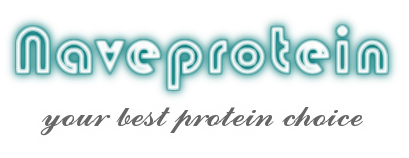Anti-HIF1A Rabbit pAb
- 100ug (NP22988) Please inquiry
Antibody type:Primary antibody
Label:Unconjugated
Modification:Unmodification
Isotype:Rabbit IgG
Host:Rabbit
Application:WB,IF
Purify method:Affinity purified
Species:Human,Mouse
Gene Name:HIF1A
Synonyms:HIF1; MOP1; PASD8; HIF-1A; bHLHe78; HIF-1alpha; HIF1-ALPHA; HIF-1-alpha
Gene Synonyms:
Gene Full Name:hypoxia inducible factor 1 subunit alpha
Gene Infomation:This gene encodes the alpha subunit of transcription factor hypoxia-inducible factor-1 (HIF-1), which is a heterodimer composed of an alpha and a beta subunit. HIF-1 functions as a master regulator of cellular and systemic homeostatic response to hypoxia by activating transcription of many genes, including those involved in energy metabolism, angiogenesis, apoptosis, and other genes whose protein products increase oxygen delivery or facilitate metabolic adaptation to hypoxia. HIF-1 thus plays an essential role in embryonic vascularization, tumor angiogenesis and pathophysiology of ischemic disease. Alternatively spliced transcript variants encoding different isoforms have been identified for this gene. [provided by RefSeq, Jul 2011]
Antigen:A synthetic peptide of human HIF1A
Antigen Synonyms:Hypoxia-inducible factor 1-alpha
Clonality:Polyclonal antibody
Source:Human
Reaction:
Form:Liquid
Tested Applications:
- Western blot (1:100 to 1:500)
- Immunofluorescence (1:50 to 1:400)
- Immunohistochemistry (1:200 to 1:500)
- Flow cytometry analysis (1:200 to 1:500)
- Enzyme-linked Immunosorbent Assay (1:100-1:5000)
Clone:
Dilution:WB1:500 -1:2000; IF1:50 -1:200(Optimal dilutions should be determined by the end user)
Mole Mass:105kDa
Location:Cytoplasm, Nucleus
Concentration:
Sequence Similarity:
Gene Id:
SwissProt ID:Q16665
Unigene:3091
Nucleotide Accession:
Tissue specificity:Expressed in most tissues with highest levels in kidney and heart. Overexpressed in the majority of common human cancers and their metastases, due to the presence of intratumoral hypoxia and as a result of mutations in genes encoding oncoproteins and tumor suppressors. A higher level expression seen in pituitary tumors as compared to the pituitary gland.
Storage:Store at -20°C. Avoid freeze / thaw cycles.
Buffer condition:PBS with 0.02% sodium azide, 50% glycerol, pH7.3.
Background:
Molar Function:Functions as a master transcriptional regulator of the adaptive response to hypoxia. Under hypoxic conditions, activates the transcription of over 40 genes, including erythropoietin, glucose transporters, glycolytic enzymes, vascular endothelial growth factor, HILPDA, and other genes whose protein products increase oxygen delivery or facilitate metabolic adaptation to hypoxia. Plays an essential role in embryonic vascularization, tumor angiogenesis and pathophysiology of ischemic disease. Binds to core DNA sequence 5'-[AG]CGTG-3' within the hypoxia response element (HRE) of target gene promoters. Activation requires recruitment of transcriptional coactivators such as CREBBP and EP300. Activity is enhanced by interaction with both, NCOA1 or NCOA2. Interaction with redox regulatory protein APEX seems to activate CTAD and potentiates activation by NCOA1 and CREBBP. Involved in the axonal distribution and transport of mitochondria in neurons during hypoxia.
Western Blot:Stability: The thermal stability is described by the loss rate. The loss rate was determined by accelerated thermal degradation test, that is, incubate the protein at 37°C for 48h, and no obvious degradation and precipitation were observed. The loss rate is less than 5% within the expiration date under appropriate storage condition.
Storage: Store at 4°C for frequent use. Stored at -20°C in a manual defrost freezer for one year without detectable loss of activity. Avoid repeated freeze-thaw cycles.
Notes: For In vitro laboratory use only. Not for any clinical, therapeutic, or diagnostic use in humans or animals. Not for animal or human consumption.
